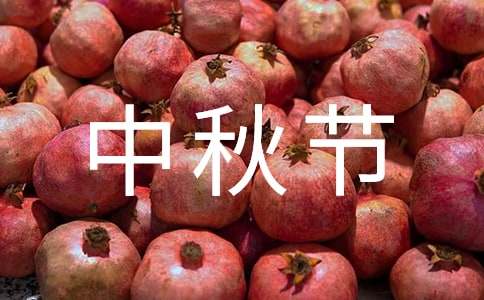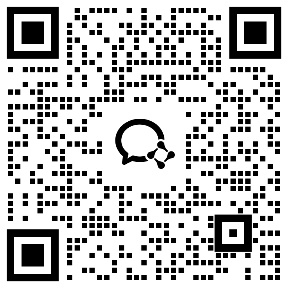有关中秋节的英文介绍
中秋节是中华民族的传统节日,是每个中国人都引以为豪的文化遗产,但是很多外国人都不熟悉这个节日,那么我们应该怎样向外国友人介绍这样一个有趣而且经典的节日呢?下面是小编为大家整理的有关中秋节的英文介绍,希望对大家有帮助!

有关中秋节的英文介绍篇一
In Fujian Province
In Pu City, females must cross the Nanpu Bridge to pray for a long life. In Jianning, people light lanterns to pray to the moon for their babies. In Shanghang county, children have to get down on their knees when they worship the moon. In Long Yan, while eating moon cakes, parents will dig a small hole in the center of the cakes, which means that some secrets should be kept from children.
In Guangdong Province
In Chaoshan, women and children will worship the Moon. When the night comes, they will burn joss sticks in front of a table of fresh fruits as a sacrifice. At that night they will also eat taros. There are two reasons why people there eat this vegetable. One is that August is the best time to eat ripe taros, and the other comes from a story. In 1279 the Mongols defeated the Southern Song Dynasty and formed the Yuan Dynasty, and they carried out their cruel domination over the Han Chinese. At that time, a well-known general called Ma Fa held out in Chaozhou to fight with Mongols. When he failed, most citizens were killed. Because the Chinese word for taros and Mongols were similar, from then on people eat taros to prove that they will always remember the pain. To eat the taro means to eat the heads of the Mongols.
In the south of Yangtze River valley
In Nanjing people will not just eat moon cakes, they will also eat another famous dish called Guihua Dark. This dish could only be cooked during the Mid-Autumn Day, because it is cooked with osmanthus flowers, which blossoms in August.
In Wuxi of Jiangsu province, people like to burn joss sticks to celebrate this special festival. The burned joss sticks are wrapped in tulle with beautiful paintings of Moon Palace or Chang'e.
In Ji'an County of Jiangxi province, peasants burn pottery jars with straws and vinegar so that the smell of the vinegar can spread all over the villages. In Xincheng County, people celebrate this festival by lighting oil lamps from the 11th day of the 8th lunar month to the 17th day.
In Sichuan province
People will prepare a lot of food like moon cakes, ducks, glutinous rice cakes, and rice dumplings. In some places, people light orange lamps, or ask children run in the streets with pomeloes decorated with burning incense in their hands. In Jiading, they worship the God of the Land and play some local dramas to celebrate this special day.
有关中秋节的英文介绍篇二
The Mid-Autumn Festival , also known as the Moon Festival, is a popular harvest festival celebrated by Chinese people and Vietnamese people (even though they celebrate it differently), dating back over 3,000 years to moon worship in China's Shang Dynasty .It was first called Zhongqiu Jie in Zhou Dynasty . In Malaysia and Singapore , it is also sometimes referred to as the Lantern Festival or Mooncake Festival.
Legend about Mid-Autumn Festival
It is said that the earth once had ten suns circling over it, each taking turn to illuminate the earth. One day, however, all ten suns appeared
together, scorching the earth with their heat. Houyi ,a strong and tyrannical archer, saved the earth by shooting down nine of the suns. He eventually became King, but grew to become a despot .
One day, Houyi stole the elixir (xiān dān 仙丹) from a goddess. However, his beautiful wife, Chang'e (嫦娥), drank it so as to save the people from her husband’s tyrannical rule. After drinking it, she found herself floating, and flew to the moon. Houyi loved his divinely beautiful wife so much, he did not shoot down the moon. Chang'e flew to the moon grabbing a rabbit to keep her company. So the Chinese say that if you look up at the moon to this day you can sometimes see a rabbit making moon cakes.
Customs in Mid-Autumn Festival
The Mid-Autumn Festival is held on the 15th day of the eighth month in the Chinese calendar, which is usually around mid or late September in the Gregorian calendar. It is a date that parallels the autumn and spring equinoxes (春分) of the solar calendar, when the moon is supposedly at its fullest and roundest. The traditional food of this festival is the mooncake, of which there are many different varieties.
The Mid-Autumn Festival is one of the two most important holidays in Chinese calendar, the other being the Chinese New Year, and is a legal holiday in several countries. Farmers celebrate the end of the summer harvest season on this day. Traditionally, on Mid-Autumn Day, Chinese family members and friends will get together to admire the bright mid-autumn harvest moon, and eat moon cakes ( 月饼) and pomeloes (柚子) together. Accompanying the celebration, there are additional cultural or regional customs, such as eating moon cakes outside under the moon, carrying brightly lit lanterns, lighting lanterns on towers, floating sky lanterns, burning incense (焚香) in reverence to deities including Chang'e, planting Mid-Autumn trees (树中秋), collecting dandelion leaves and distributing them evenly among family members and Fire Dragon Dances (舞火龙).
有关中秋节的英文介绍篇三
"Zhong Qiu Jie", which is also known as the Mid-Autumn Festival, is celebrated on the 15th day of the 8th month of the lunar calendar. It is a time for family members and loved ones to congregate and enjoy the full moon - an auspicious symbol of abundance, harmony and luck. Adults will usually indulge in fragrant mooncakes of many varieties with a good cup of piping hot Chinese tea, while the little ones run around with their brightly-lit lanterns.
"Zhong Qiu Jie" probably began as a harvest festival. The festival was later given a mythological flavour with legends of Chang-E, the beautiful lady in the moon.
According to Chinese mythology, the earth once had 10 suns circling over it. One day, all 10 suns appeared together, scorching the earth with their heat. The earth was saved when a strong archer, Hou Yi, succeeded in shooting down 9 of the suns. Yi stole the elixir of life to save the people from his tyrannical rule, but his wife, Chang-E drank it. Thus started the legend of the lady in the moon to whom young Chinese girls would pray at the Mid-Autumn Festival.
In the 14th century, the eating of mooncakes at "Zhong Qiu Jie" was given a new significance. The story goes that when Zhu Yuan Zhang was plotting to overthrow the Yuan Dynasty started by the Mongolians, the rebels hid their messages in the Mid-Autumn mooncakes. Zhong Qiu Jie is hence also a commemoration of the overthrow of the Mongolians by the Han people.
During the Yuan Dynasty (A.D.1206-1368) China was ruled by the Mongolian people. Leaders from the preceding Sung Dynasty (A.D.960-1279) were unhappy at submitting to foreign rule, and set how to coordinate the rebellion without it being discovered. The leaders of the rebellion, knowing that the Moon Festival was drawing near, ordered the making of special cakes. Packed into each mooncake was a message with the outline of the attack. On the night of the Moon Festival, the rebels successfully attacked and overthrew the government. What followed was the establishment of the Ming Dynasty (A.D. 1368-1644). Today, moon cakes are eaten to commemorate this event.
Mid-Autumn Day is a traditional festival in China. Almost everyone likes to eat mooncakes on that day. Most families have a dinner together to celebrate the festival. A saying goes, "The moon in your hometown is almost always the brightest and roundest". Many people who live far away from homes want to go back to have a family reunion . How happy it is to enjoy the moon cakes while watching the full moon with your family members.
有关中秋节的英文介绍篇四
The joyous Mid-Autumn Festival was celebrated on the fifteenth day of the eighth moon, around the time of the autumn equinox(秋分). Many referred to it simply as the "Fifteenth of the Eighth Moon".
This day was also considered as a harvest festival since fruits, vegetables and grain had been harvested by this time and food was abundant. Food offerings were placed on an altar set up in the courtyard. Apples, pears, peaches, grapes, pomegranates(石榴), melons, oranges and pomelos(柚子) might be seen. Special foods for the festival included moon cakes, cooked taro(芋头)and water caltrope(菱角), a type of water chestnut resembling black buffalo horns. Some people insisted that cooked taro be included because at the time of creation, taro was the first food discovered at night in the moonlight. Of all these foods, it could not be omitted from the Mid-Autumn Festival.
The round moon cakes, measuring about three inches in diameter and one and a half inches in thickness, resembled Western fruitcakes in taste and consistency. These cakes were made with melon seeds(西瓜子), lotus seeds(莲籽), almonds(杏仁), minced meats, bean paste, orange peels and lard(猪油). A golden yolk(蛋黄) from a salted duck egg was placed at the center of each cake, and the golden brown crust was decorated with symbols of the festival. Traditionally, thirteen moon cakes were piled in a pyramid to symbolize the thirteen moons of a "complete year," that is, twelve moons plus one intercalary(闰月的) moon.
The Mid-Autumn Festival is a traditional festivity for both the Han and minority nationalities. The custom of worshipping the moon can be traced back as far as the ancient Xia and Shang Dynasties (2000 B.C.-1066 B.C.). In the Zhou Dynasty(1066 B.C.-221 B.C.), people hold ceremonies to greet winter and worship the moon whenever the Mid-Autumn Festival sets in. It becomes very prevalent in the Tang Dynasty(618-907 A.D.) that people enjoy and worship the full moon. In the Southern Song Dynasty (1127-1279 A.D.), however, people send round moon cakes to their relatives as gifts in expression of their best wishes of family reunion . When it becomes dark, they look up at the full silver moon or go sightseeing on lakes to celebrate the festival. Since the Ming (1368-1644 A.D. ) and Qing Dynasties (1644-1911A.D.), the custom of Mid-Autumn Festival celebration becomes unprecedented popular. Together with the celebration there appear some special customs in different parts of the country, such as burning incense(熏香), planting Mid-Autumn trees, lighting lanterns on towers and fire dragon dances. However, the custom of playing under the moon is not so popular as it used to be nowadays, but it is not less popular to enjoy the bright silver moon. Whenever the festival sets in, people will look up at the full silver moon, drinking wine to celebrate their happy life or thinking of their relatives and friends far from home, and extending all of their best wishes to them.
Moon Cakes
There is this story about the moon-cake. during the Yuan dynasty (A.D. 1280-1368) China was ruled by the Mongolian people. Leaders from the preceding Sung dynasty (A.D. 960-1280) were unhappy at submitting to the foreign rule, and set how to coordinate the rebellion without being discovered. The leaders of the rebellion, knowing that the Moon Festival was drawing near, ordered the making of special cakes. Backed into each moon cake was a message with the outline of the attack. On the night of the Moon Festival, the rebels successfully attached and overthrew the government. Today, moon cakes are eaten to commemorate this legend and was called the Moon Cake.
For generations, moon cakes have been made with sweet fillings of nuts, mashed red beans, lotus-seed paste or Chinese dates(枣子), wrapped in a pastry. Sometimes a cooked egg yolk can be found in the middle of the rich tasting dessert. People compare moon cakes to the plum pudding and fruit cakes which are served in the English holiday seasons.
Nowadays, there are hundreds varieties of moon cakes on sale a month before the arrival of Moon Festival.
【中秋节的英文介绍】相关文章:
中秋节英文介绍12-09
中秋节习俗英文介绍12-09
关于中秋节的英文介绍12-09
中秋节英文12-09
中秋节英文祝福12-09
中秋节英文作文12-09
关于中秋节的英文12-09
英文自我介绍06-12
自我介绍英文12-05






